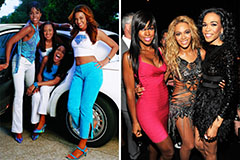When it comes to the pantheon of specialist fumbling championship designs, couple of stimulate the very same sense of nostalgia, status, and the large power of a past period as the WWF Winged Eagle Belt. For lots of followers that grew up throughout the late 1980s and the 1990s, this renowned title represents the undisputed icon of wrestling supremacy in the World Wrestling Federation (WWF), a duration often referred to as the "Golden Era" and the very early years of the "New Generation." The very sight of the WWF Winged Eagle Belt raises images of epic champs, impressive competitions, and the epic individualities that specified a generation of wrestling.
Introduced in early 1988, the WWF Winged Eagle Belt marked a considerable departure from its precursors, introducing an age of even more intricate and aesthetically striking championship designs. It quickly came to be identified with the WWF Championship itself, a reward held by the industry's biggest stars and the best objective for any competitor stepping into the WWF ring. To hold the WWF Winged Eagle Belt was to stand atop the wrestling globe.
The Birth and Style of an Symbol
The WWF Winged Eagle Belt made its launching throughout a crucial time for the WWF, as the company was experiencing unprecedented development and mainstream appeal under the leadership of Vince McMahon Jr. Made by the legendary Reggie Parks, the belt was revealed in February 1988, with Hulk Hogan being the first to use this brand-new symbol of champion glory.
The style of the WWF Winged Eagle Belt was truly captivating and stays precious by followers to this day. Its key functions included:
A Majestic Central Plate: The centerpiece of the belt was a big, elaborately developed gold plate featuring a prominent and stunning eagle with its wings fully spread. This powerful imagery represented prominence, flexibility, and the soaring elevations of champion accomplishment.
Complex Etchings: Bordering the eagle and throughout the main plate were described etchings, including deepness and a sense of majesty to the layout. Words "World Heavyweight Wrestling Champ" were prominently displayed, leaving no doubt regarding the title's value.
Side Plates with the WWF Logo Design: Flanking the central plate were smaller sized side plates, usually featuring the timeless block "WWF" logo. These side plates enhanced the championship's affiliation with the Globe Fumbling Federation and contributed to the total visual equilibrium of the belt.
A Regal Natural Leather Band: The WWF Winged Eagle Belt was usually secured with a black natural leather strap, contributing to its classic and respected look.
The combination of the striking eagle layout, the detailed detailing, and the bold text made the WWF Winged Eagle Belt instantaneously identifiable and extremely coveted. It was a graph of power and excellence that resonated with fans of any ages.
An Era Defined by the Winged Eagle
The decade-long power of the WWF Winged Eagle Belt, from 1988 to 1998, accompanied one of the most effective and remarkable durations in WWF background. The champs that held this renowned title were a few of the largest names in the industry, and their powers aided to solidify the belt's fabulous standing:
Hunk Hogan: As the very first champion to wear the Winged Eagle, Hogan's multiple regimes with the title throughout the late 1980s sealed its value as the utmost reward in wrestling.
Randy Savage: "Macho Man" Randy Savage's two regimes with the Winged Eagle were marked by charisma, intensity, and memorable storylines.
The Ultimate Warrior: The electrifying Ultimate Warrior's passionate and energised champion run with the Winged Eagle remains a highlight for lots of fans.
Bret Hart: "The Gunman" Bret Hart's two regimes showcased technological brilliance and a dedication to in-ring excellence, more raising the stature of the title.
Shawn Michaels: "The Heartbreak Youngster" Shawn Michaels's psychological and innovative championship triumph and subsequent regime with the Winged Eagle are renowned minutes in WWF history.
Sycho wwf winged eagle belt Sid: The uncertain and effective Sycho Sid held the Winged Eagle on two celebrations, adding his unique strength to the championship's lineage.
Diesel (Kevin Nash): Diesel's leading power with the Winged Eagle showcased a brand-new, effective pressure on top of the WWF.
The Undertaker: The legendary Undertaker's several WWF Champion reigns, all with the Winged Eagle, added a feeling of mystique and supremacy to the title.
These champs, together with others that quickly held the WWF Winged Eagle Belt, created plenty of memorable moments and timeless suits, permanently connecting their heritages with the famous layout of the championship. The WWF Winged Eagle Belt was not simply a prop; it was an important part of the narration, standing for the ultimate prize in the fiercely competitive globe of the WWF.
The Winged Eagle's Enduring Allure
Also after its retired life in 1998, when it was replaced by the " Huge Eagle" or " Mindset Era" champion style, the WWF Winged Eagle Belt has maintained a solid and passionate following among battling fans. Its timeless style, the period it represents, and the fabulous champions who held it have all contributed to its enduring allure.
Fond memories: For fans that grew up during the late 80s and 90s, the Winged Eagle evokes a strong sense of fond memories wherefore numerous take into consideration a golden era of specialist fumbling.
Iconic Layout: The aesthetically striking and healthy design of the belt, specifically the stunning eagle, stays highly considered as one of the most effective champion designs in battling background.
Organization with Legends: The WWF Winged Eagle Belt is totally linked with several of the largest names in wrestling background, additional enhancing its famous standing.
A Sign of a Particular Age: The belt represents a distinct duration in WWF history, characterized by epic heroes, compelling storylines, and a extra family-friendly approach to wrestling.
The WWF Winged Eagle Belt remains to be a popular item for reproduction belts and merchandise, demonstrating its long-term impact on wrestling culture. Its image is often utilized in throwback graphics and discussions regarding the history of the WWF/copyright Champion.
A Current Minute of Nostalgia.
The enduring charm of the WWF Winged Eagle Belt was just recently highlighted on copyright's Saturday Night Centerpiece on December 16, 2024. In a unique gesture, copyright Principal Content Police officer Triple H offered the Indisputable copyright Universal Champion Cody Rhodes with a version of the Winged Eagle belt to wear for his suit versus Kevin Owens. This one-night return of the iconic title was consulted with extensive interest from followers, highlighting its timeless value and Cody Rhodes's very own admiration for wrestling history. Rhodes himself has actually revealed his desire to see the Winged Eagle make a more long-term return.
Verdict.
The WWF Winged Eagle Belt stands as a effective icon of a transformative era in professional wrestling. Its famous style and the famous champs that proudly used it have cemented its location as one of one of the most beloved and prestigious championship belts in the history of the sport. Greater than just a title, the WWF Winged Eagle Belt represents the apex of the Golden Era, a time of larger-than-life heroes and sustaining memories that remain to resonate with battling followers worldwide. Its tradition skyrockets as high as the eagle it so prominently functions.
 Yasmine Bleeth Then & Now!
Yasmine Bleeth Then & Now! Destiny’s Child Then & Now!
Destiny’s Child Then & Now! Suri Cruise Then & Now!
Suri Cruise Then & Now! Jaclyn Smith Then & Now!
Jaclyn Smith Then & Now! Teri Hatcher Then & Now!
Teri Hatcher Then & Now!